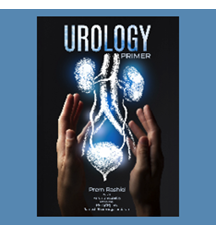2024 | Volume 25 | Issue 6

Authors: Dr John Mutu-Grigg, Chair Māori Health Advisory Committee and Dr Ros Pochin, Chair Aotearoa New Zealand National Committee
As a nation, Aotearoa New Zealand stands at a critical juncture in determining the future of its healthcare system. A key element in shaping that future is the way we select medical students. Historically, the selection process for medical school has focused predominantly on academic merit. However, recent discussions have increasingly questioned whether academic achievement alone is the best measure of a prospective doctor's potential. With nearly 150 years of local experience and a growing body of international research, we now have a clearer understanding of the qualities and skills that make an exceptional doctor.
A shift in focus: moving beyond marks
Studies consistently show academic marks are often more indicative of the resources available to a student rather than their innate aptitude for medicine. Students from affluent schools and households, with access to better resources, tend to score higher than their peers, regardless of their true potential. As a result, those who face systemic disadvantages are often excluded from medical school, despite their potential to be exceptional doctors.
The research is clear: when high marks are the primary measure of merit, we perpetuate disparities in access to education. The focus on academic performance, once above a certain threshold, can become discriminatory. We must therefore rethink what ‘merit’ means in the context of selecting future healthcare professionals.
Expanding the definition of merit
Globally, medical schools are increasingly adopting a more holistic approach to selection, one that goes beyond mere academic achievement. While no single individual can meet every criterion for the ‘perfect’ doctor, we must broaden the range of qualities we seek in prospective medical students. These qualities include life experiences, cultural competence, and a commitment to serving diverse communities.
Currently, many medical schools still predominantly select individuals with similar sets of skills and life experiences—often from similar socio-economic backgrounds. This lack of diversity limits the richness of perspectives and experiences within the medical profession, leaving many potentially excellent candidates from under-represented communities without the opportunity to pursue a career in medicine.
We must select a medical workforce that mirrors the diversity of Aotearoa New Zealand itself—one that is equipped to provide compassionate and competent care to all communities, including Māori, Pacifica, and other underserved populations. Evidence shows that a diverse medical workforce enhances cultural competence and improves learning outcomes for all doctors, as well as improving patient outcomes—making it a win-win for the entire healthcare system.
Addressing healthcare disparities through diversity
Healthcare disparities continue to be a significant challenge in many communities. Research consistently demonstrates that healthcare providers who reflect the diversity of the population they serve are better equipped to address these disparities and deliver improved health outcomes. It is crucial that we foster a medical workforce that mirrors the needs of the population, particularly in regions where healthcare access is most limited.
In Aotearoa New Zealand, we are facing an impending crisis in primary healthcare. The shortage of general practitioners (GPs) is expected to worsen as many current GPs retire in the coming years. At the same time, we see many junior doctors spending years in highly competitive specialties, yet not advancing into senior roles because of an oversupply of applicants in certain fields. This misalignment between the supply of doctors and the needs of the healthcare system is associated with our current selection process. Evidence shows, for example, if we select and train in rural centres medical students and doctors are more likely to stay in these areas.
Aligning selection with healthcare needs
In Aotearoa New Zealand, the selection process for medical school can be seen as akin to selecting rugby players for a team. We have selected the best individual players, but they all happen to be outside backs and loose forwards—we are selecting only players with the same skills. While these individuals are undoubtedly talented, the team itself becomes unbalanced, and the overall performance suffers. To build a healthcare system that meets the needs of all New Zealanders, we must focus on selecting doctors who can fill critical gaps in primary care, especially in rural, under-served, Māori, and Pacifica communities.
We need to identify and select candidates who are committed to working in these under-served areas and addressing the healthcare needs of marginalised communities.
Importantly, this does not mean that urban areas will lack access to specialists—these roles will continue to attract many highly qualified applicants. However, we must prioritise those who are willing to work in areas where doctors are most needed, whether in primary care or in specialties with fewer applicants.
A holistic approach to selection
To achieve this, the medical school selection process must shift towards a more evidence-based approach. We must assess potential candidates based on a broader range of criteria, including personal experiences, cultural competence, and a demonstrated commitment to serving underrepresented populations. We also need to actively work to reduce systemic barriers for students from underprivileged backgrounds, offering mentorship, preparatory courses, and exposure to careers in medicine through partnerships with high schools, colleges, and community organisations.
Additionally, it is vital admissions committees and faculty members receive training to recognise and mitigate biases in the selection process, ensuring all candidates are evaluated fairly and equitably. By breaking down these barriers and expanding access to medical education, we can create a more inclusive and diverse healthcare workforce equipped to serve the needs of all New Zealander's.
Conclusion
The future of healthcare in Aotearoa New Zealand depends on the decisions we make today about how we select and train our doctors. To build a healthcare system that is diverse, equitable, and responsive to the needs of our communities, we must move beyond a predominantly singular focus on academic marks and embrace a more holistic approach to medical school admissions. By prioritising diversity, cultural competence, and a commitment to serving under-served populations, we can ensure a healthier, more inclusive future for all.

